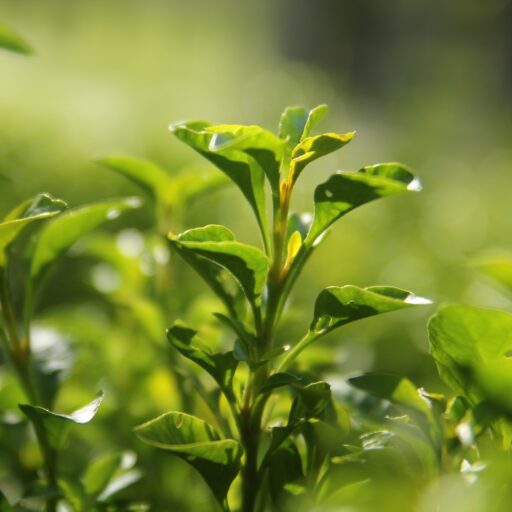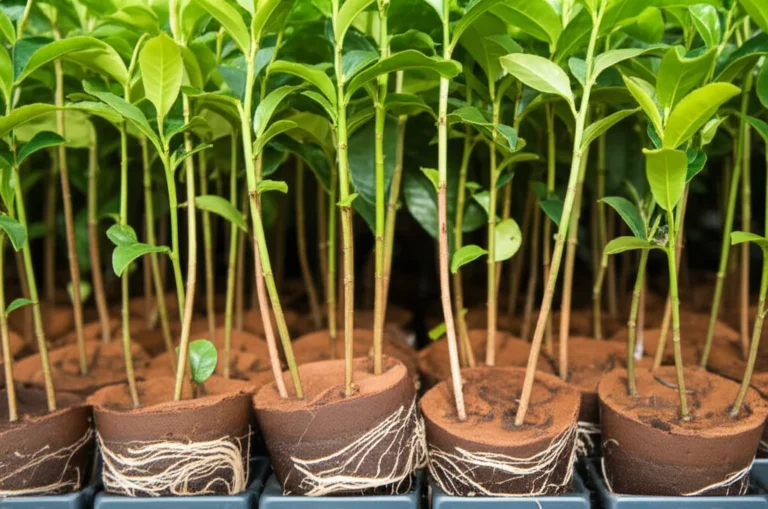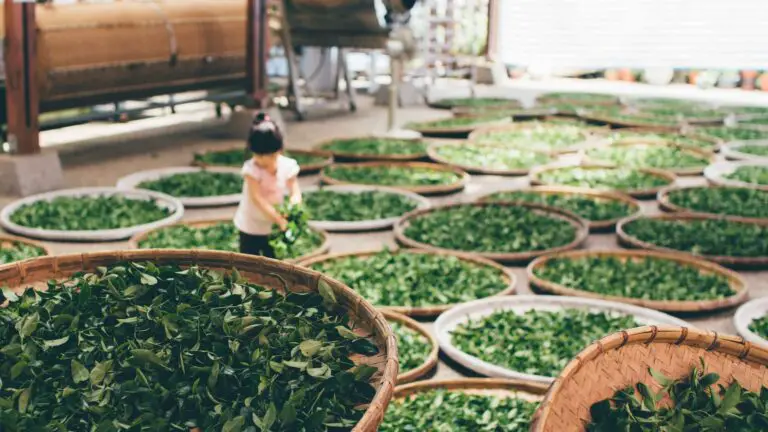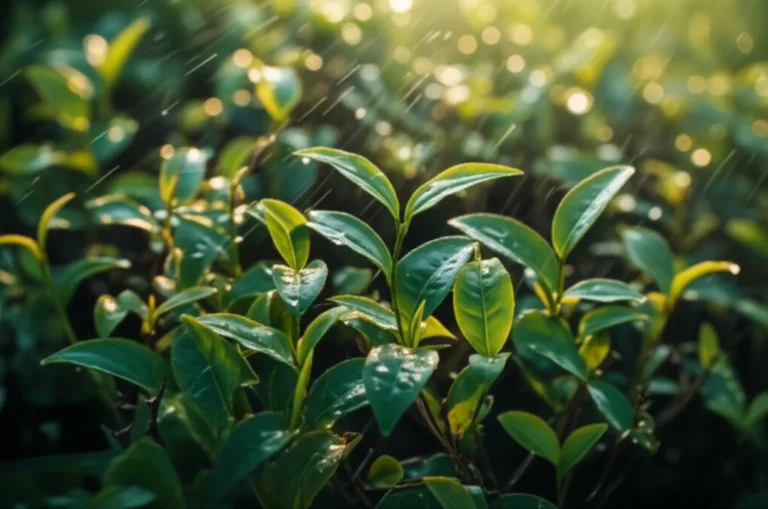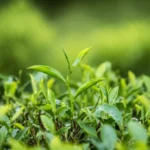Support our educational content for free when you purchase through links on our site. Learn more
🌱 10 Must-Know Companion Plants for Tea Gardens (2025)
Did you know that your tea plants can thrive better with the right neighbors? At Growing Teas™, we’ve spent years experimenting with companion planting to unlock the secret to healthier, more flavorful Camellia sinensis. Imagine a garden where marigolds fend off pests, legumes enrich the soil with nitrogen, and aromatic herbs confuse hungry insects—all working together in perfect harmony. Intrigued? Later in this article, we’ll reveal our top 10 companion plants that have transformed our tea fields into buzzing, vibrant ecosystems. Plus, we’ll share some surprising stories—like how a rogue mint patch nearly took over our entire farm!
Whether you’re a seasoned tea grower or a curious beginner, this comprehensive guide will equip you with everything you need to cultivate your own thriving tea garden. Ready to turn your tea plants into social butterflies? Let’s dive in!
Key Takeaways
- Companion planting boosts tea plant health by naturally deterring pests, improving soil fertility, and enhancing microclimates.
- Top companions include marigolds, legumes, comfrey, and aromatic herbs like lavender and rosemary that support pest control and nutrient cycling.
- Avoid aggressive plants like running mint that can choke out your tea bushes.
- Strategic garden design and regional climate considerations are essential for success.
- Companion planting indirectly influences tea flavor by improving plant vitality and soil health.
Ready to grow tea plants that thrive in good company? Keep reading to discover our expert recommendations and insider tips!
Table of Contents
- ⚡️ Quick Tips and Facts for Tea Plant Companions
- 🌿 The Ancient Art of Companion Planting: A Historical Perspective for Your Tea Garden
- 🌱 Why Bother? The Unbeatable Benefits of Companion Planting with Camellia Sinensis
- 🔍 Understanding the Principles: How Companion Planting Works Its Magic
- 🌼 Our Top Picks: The Best Companion Plants for Your Tea Bushes
- 🌸 Marigolds & Nasturtiums: The Pest Patrol Duo
- 🌿 Legumes (Clover, Beans): Nitrogen Fixers Extraordinaire
- 🌻 Sunflowers: Shade Providers & Beneficial Insect Magnets
- 🌶️ Chili Peppers: A Spicy Deterrent for Unwanted Guests
- 🌾 Vetiver Grass: Erosion Control & Soil Structure Superstar
- 💜 Lavender & Rosemary: Aromatic Allies for Pest Confusion
- 🌱 Comfrey: The Dynamic Accumulator & Mulch Maker
- 🍎 Fruit Trees (Dwarf Varieties): Strategic Shade & Biodiversity
- 🧅 Alliums (Garlic, Chives): Fungal Fighters & Insect Repellents
- 🌿 Basil: Aromatic Protection & Culinary Delight
- 🚫 What NOT to Plant: The Unfriendly Neighbors for Your Tea Plants
- 🗺️ Designing Your Dream Tea Garden: Layout & Implementation Strategies
- 🧑🌾 Our “Growing Teas™” Personal Experiences & Anecdotes
- ✅ Common Mistakes to Avoid When Companion Planting Tea
- 🌍 Regional & Climate Considerations for Tea Companion Planting
- 📈 Beyond the Basics: Advanced Tips for a Thriving Tea Polyculture
- 🔚 Conclusion: Cultivating Harmony, One Tea Plant at a Time
- 🔗 Recommended Links for Further Reading
- ❓ FAQ: Your Companion Planting Questions Answered
- 📚 Reference Links & Scientific Sources
Here is the main body of the article, written according to your instructions.
⚡️ Quick Tips and Facts for Tea Plant Companions
Jumping into the world of tea gardening? Welcome! We at Growing Teas™ are thrilled you’re here. Before we get into the nitty-gritty, here are some rapid-fire tidbits to get your tea-loving brain buzzing. Think of this as the espresso shot before the main course!
- Not All Friends Are Forever: Some companions are annuals (like marigolds) that you’ll replant each year, while others are perennials (like lavender) that will stick around with your tea bushes for the long haul.
- Aromatic Allies are Key: Many of the best companions for tea plants (Camellia sinensis) are aromatic herbs. Their strong scents can confuse pests looking for a tasty tea leaf snack. 👃
- Think Vertically & Horizontally: Companion planting isn’t just about what’s next to your tea plant, but also what’s above and below. Taller plants can offer shade, while groundcovers can suppress weeds and retain moisture.
- ✅ Do: Plant nitrogen-fixing legumes like clover around your tea plants. They pull nitrogen from the air and make it available in the soil, a key nutrient for lush, green leaves.
- ❌ Don’t: Plant anything with an overly aggressive root system right next to your tea. Plants like certain types of running bamboo can outcompete your precious tea for water and nutrients.
- Flavor Myth or Magic? Does planting mint next to your tea give you mint-flavored tea leaves? Not directly, but the overall health and vitality of the soil ecosystem can influence the subtle nuances (terroir) of your tea’s final flavor profile. More on this delicious mystery later!
- The “Chive Tea” Trick: As gardening expert Sarah Raven suggests, a “tea” made from rotted chives can be a potent natural fungicide. This is a fantastic trick for preventing mildew, which can sometimes trouble tea plants in humid conditions.
| Feature | Quick Fact | Why It Matters for Tea |
|---|---|---|
| Pest Control | Nasturtiums act as a “trap crop” for aphids. | Lures pests away from your valuable tea leaves. |
| Soil Health | Comfrey is a “dynamic accumulator,” mining nutrients from deep in the soil. | When its leaves decompose, they release these nutrients for your tea plants to use. |
| Pollination | Echinacea attracts beneficial insects like hoverflies. | While tea plants are primarily wind-pollinated, a healthy insect population indicates a thriving ecosystem. |
| Weed Suppression | Low-growing groundcovers like creeping thyme shade out weeds. | Less competition for your tea plants means more resources for growth. |
🌿 The Ancient Art of Companion Planting: A Historical Perspective for Your Tea Garden
Companion planting isn’t some new-fangled trend you saw on Instagram. Oh no! This is ancient wisdom, a practice that farmers and gardeners have been using for centuries, long before chemical pesticides were even a thought. The concept is simple and beautiful: some plants just help each other grow. It’s like finding out your quiet, unassuming neighbor is secretly a superhero who keeps villains away from your house.
The famous “Three Sisters” of Native American agriculture—corn, beans, and squash—is a classic example. The corn provides a trellis for the beans to climb, the beans fix nitrogen in the soil for the other plants, and the sprawling squash leaves shade the ground, preventing weeds and conserving moisture. It’s a perfect, self-sustaining little community!
This idea of creating a balanced, cooperative ecosystem is central to our philosophy of Green Tea Cultivation. While the History of Tea is rich with tales of solitary mountain bushes, the principles of polyculture (growing multiple crops in the same space) have always been a part of sustainable agriculture. By thoughtfully choosing companions for our Camellia sinensis, we’re not just planting a garden; we’re curating a thriving, resilient ecosystem that works with nature, not against it.
🌱 Why Bother? The Unbeatable Benefits of Companion Planting with Camellia Sinensis
So, why go to the trouble of playing matchmaker with your plants? Can’t a tea bush just grow happily on its own? It can, but with the right friends, it can absolutely thrive. Here at the farm, we’ve seen the difference firsthand. A well-planned companion planting scheme is a game-changer.
🛡️ Natural Pest Deterrence & Disease Resistance
This is the big one! Many companion plants are like bouncers for your tea garden, keeping the riff-raff out.
- Aromatic Confusion: Pests often find their targets through scent. Planting strongly scented herbs like lavender, rosemary, or lemon balm can mask the smell of your tea plants, effectively throwing pests off the trail. The folks at Zen Stitching note that lemon balm is great for deterring insects that attack cabbage family crops by masking their smell, and the same principle applies here.
- Trap Cropping: Some plants, like the vibrant nasturtium, are aphid magnets. This sounds bad, but it’s brilliant! Aphids will flock to the nasturtiums, leaving your precious tea plants alone. It’s the horticultural equivalent of taking one for the team.
- Fungicidal Friends: Did you know some plants have natural antifungal properties? As mentioned earlier, Sarah Raven champions the use of chives to combat mildew. She also suggests that the sulphurous aroma emitted by warm salvias may have fungicidal properties, a fascinating idea for protecting plants naturally.
✨ Enhancing Soil Health & Nutrient Cycling
Happy soil equals happy tea. It’s that simple. Your companions can be little soil-conditioning superheroes.
- Nitrogen Fixers: Plants in the legume family (clover, beans, peas) have a magical relationship with bacteria that allows them to pull nitrogen from the atmosphere and “fix” it into the soil. This provides a slow, steady, and free supply of this essential nutrient for your tea’s leafy growth.
- Dynamic Accumulators: Meet comfrey, the star of our Herbal Tea Planting section and a must-have companion. Comfrey has a deep taproot that acts like a biological drill, pulling up nutrients like potassium from deep within the soil where other plants can’t reach. When you “chop and drop” the leaves as mulch, these nutrients become available to your tea plants. Sarah Raven aptly calls the liquid feed made from rotted comfrey “homegrown Tomorite.”
🐝 Attracting Beneficial Insects & Pollinators
You want the good guys in your garden! Ladybugs, lacewings, hoverflies, and parasitic wasps are voracious predators of common pests like aphids and mites.
- Flower Power: Plants with umbrella-shaped flowers (like dill and fennel) or composite flowers (like calendula and echinacea) are irresistible to these beneficial bugs. Zen Stitching’s article highlights that echinacea is great for attracting hoverflies and parasitoid wasps.
- A Living Ecosystem: By providing a steady source of nectar and pollen, you encourage these helpful insects to make your garden their permanent home, creating a self-regulating system of pest control.
🌬️ Providing Shelter & Microclimates
Camellia sinensis enjoys dappled sunlight and protection from harsh winds, especially when young.
- Living Windbreaks: Taller, sturdier plants like sunflowers or strategically placed fruit trees can act as a natural windbreak.
- Shade Providers: In hotter climates, the shade from a taller companion can protect tea leaves from scorching during the most intense part of the afternoon. This can lead to more tender, flavorful leaves, a technique often used in high-end Green Tea Cultivation.
☕️ Potential Flavor Nuances: A Tea Grower’s Secret?
Now for that tantalizing question: can companion plants change the flavor of your tea? The short answer is… it’s complicated. You won’t get raspberry-flavored tea just by planting a raspberry bush next to it.
However, the long answer is more interesting. The concept of terroir in tea is all about how the environment—soil, climate, surrounding flora—influences the final taste. Healthy, nutrient-rich soil, teeming with microbial life and supported by a diverse range of plants, will undoubtedly produce a healthier, more vibrant tea plant. This vitality translates into a more complex and nuanced flavor profile in the cup. So, while you’re not directly infusing flavors, you are contributing to the overall quality and character of your tea. It’s a key part of the art behind DIY Tea Blending right from the soil up!
🔍 Understanding the Principles: How Companion Planting Works Its Magic
It all feels a bit like magic, doesn’t it? But there’s real science behind these green friendships. Let’s peek behind the curtain.
🧪 Allelopathy: Friend or Foe?
This is a big word for a simple concept: some plants release biochemicals that can affect the growth, survival, and reproduction of other plants. It can be a force for good or evil in the garden!
- The Good: Marigolds release a substance called thiophene into the soil, which is toxic to root-knot nematodes, a common microscopic pest. This is a prime example of positive allelopathy.
- The Bad: Black walnut trees are infamous for releasing juglone, a chemical that inhibits the growth of many other plants, including tomatoes and potatoes. This is why we must be careful about which “friends” we introduce to our tea.
🤝 Symbiotic Relationships & Resource Sharing
Beyond chemical warfare, plants engage in all sorts of cooperative behaviors.
- Mycorrhizal Networks: Underground, the roots of different plants are often connected by a vast network of beneficial fungi called mycorrhizae. This “wood wide web” allows plants to share water, nutrients, and even distress signals. A diverse garden fosters a stronger, more resilient fungal network.
- Complementary Root Depths: Planting deep-rooted plants (like comfrey) next to the more shallow-rooted tea bush means they aren’t directly competing for resources in the same soil layer. They’re good roommates, each staying in their own space.
🌼 Our Top Picks: The Best Companion Plants for Your Tea Bushes
Alright, let’s get to the fun part! After years of trial and error on our farm, here is our “A-list” of companions for Camellia sinensis.
1. Marigolds & Nasturtiums: The Pest Patrol Duo
These two are non-negotiable in our tea fields. They’re the cheerful, hardworking security guards of the plant world.
- French Marigolds (Tagetes patula): As mentioned, they are nematode ninjas, protecting the roots of your tea plant. Their pungent scent also deters a host of above-ground pests.
- Nasturtiums (Tropaeolum): The ultimate team player. They act as a trap crop for aphids and other pests. Plus, their flowers and leaves are edible with a lovely peppery taste for your salads!
👉 Shop Seeds on:
2. Legumes (Clover, Beans): Nitrogen Fixers Extraordinaire
For lush, vibrant green leaves—the very heart of good tea—you need nitrogen. Legumes are your free, all-natural fertilizer factory.
- White Clover (Trifolium repens): We love using this as a “living mulch” around our tea bushes. It suppresses weeds, retains soil moisture, and constantly fixes nitrogen right where the tea roots can access it.
- Bush Beans: Planting a row of bush beans nearby can also enrich the soil for the growing season.
3. Sunflowers: Shade Providers & Beneficial Insect Magnets
These towering beauties are more than just a pretty face.
- Afternoon Shade: A strategically planted row of sunflowers can provide welcome shade from the harshest afternoon sun, preventing leaf scorch on your tea plants.
- Beneficial Bug Hotel: Their large flower heads attract a huge range of pollinators and predatory insects, creating a buzzing hub of activity that benefits the entire garden.
4. Chili Peppers: A Spicy Deterrent for Unwanted Guests
Some pests just can’t handle the heat!
- Capsaicin Power: The compound that gives chili peppers their kick, capsaicin, is a known irritant to many mammals (like rabbits) and insects. Planting them near your tea can make the area less appealing to would-be nibblers.
5. Vetiver Grass: Erosion Control & Soil Structure Superstar
If you’re planting your tea on a slope, vetiver grass is your best friend.
- Deep Roots: This non-invasive grass has a deep, fibrous root system that grows straight down, creating a dense underground curtain that holds soil in place and prevents erosion. It’s a cornerstone of sustainable agriculture in many tea-growing regions.
6. Lavender & Rosemary: Aromatic Allies for Pest Confusion
These Mediterranean herbs love similar sunny, well-drained conditions that tea plants enjoy.
- Scent Masking: Their strong, pleasant aromas are fantastic for confusing pests like aphids and mites.
- Pollinator Paradise: Bees adore lavender and rosemary flowers, which helps support the overall health of your garden’s ecosystem.
7. Comfrey: The Dynamic Accumulator & Mulch Maker
We’ve already sung its praises, but comfrey deserves its own spot on the list. It’s a powerhouse of nutrients.
- Chop and Drop: Simply cut the large leaves a few times a year and lay them around the base of your tea plants. As they break down, they release a wealth of potassium and other micronutrients.
- Liquid Gold: You can also make a potent liquid fertilizer by steeping comfrey leaves in water for a few weeks. It’s smelly, but your plants will thank you!
👉 Shop Comfrey on:
8. Fruit Trees (Dwarf Varieties): Strategic Shade & Biodiversity
In many traditional tea gardens, tea is grown under a canopy of larger trees. This is known as agroforestry.
- Dappled Light: Dwarf apple or plum trees can create the perfect dappled light conditions that Camellia sinensis loves, while also providing you with a delicious secondary harvest.
- Biodiversity Boost: Trees add a whole new layer to your garden’s ecosystem, providing habitat for birds and beneficial insects.
9. Alliums (Garlic, Chives): Fungal Fighters & Insect Repellents
The onion family brings more than just flavor to the table.
- Sulphur Compounds: Alliums contain sulphur compounds that can help deter a variety of pests and may have fungicidal properties, as noted by Sarah Raven’s use of chive tea against mildew.
- Aphid Annoyers: The strong scent of garlic and chives is known to repel aphids.
10. Basil: Aromatic Protection & Culinary Delight
A fantastic herb to tuck in around your tea plants.
- Repellent Properties: Basil is thought to repel thrips and mosquitoes. In her article, Sarah Raven mentions using it under tomato plants to great effect.
- Healthy Growth: Some gardeners swear that basil improves the growth and flavor of neighboring plants, and while the science is still out, a healthy, happy neighbor is always a good thing!
🚫 What NOT to Plant: The Unfriendly Neighbors for Your Tea Plants
Just as important as knowing who to invite to the party is knowing who to leave off the guest list. Not all plants play well with others. Here are a few to keep away from your precious tea bushes.
🌲 Aggressive Root Systems & Nutrient Hogs
Your tea plant needs its personal space, especially underground.
- Running Mint: We love mint, but as the Zen Stitching article wisely cautions, it can be incredibly invasive. Its runners will quickly spread and can choke out the roots of your tea plant. If you want to plant mint, keep it in a pot!
- Heavy Feeders: Avoid planting extremely nutrient-hungry vegetables like corn or large brassicas right next to your tea, as they will compete directly for the same soil resources.
🦠 Disease Magnets & Pest Attractors
Some plants are particularly susceptible to certain diseases that could potentially spread to your tea.
- Verticillium Wilt Hosts: Plants like tomatoes and potatoes can be susceptible to verticillium wilt, a soil-borne fungal disease. While tea plants are generally resistant, it’s best to avoid planting known hosts nearby to keep your soil as healthy as possible.
💨 Plants with Strong Allelopathic Effects on Tea
Remember allelopathy? Some plants are just not friendly neighbors.
- Black Walnut: The absolute number one plant to avoid. The juglone it produces is toxic to a wide range of plants.
- Fennel: Fennel is a bit of a garden bully. It can inhibit the growth of many plants, so it’s best to give it its own patch far away from your tea.
🗺️ Designing Your Dream Tea Garden: Layout & Implementation Strategies
Ready to get your hands dirty? Let’s talk design. Creating a companion-planted tea garden is like painting a living picture. You need to think about size, shape, light, and how all the elements work together.
📏 Spacing Considerations for Optimal Growth
Give your plants room to breathe! Overcrowding is a recipe for disaster, leading to competition for resources and poor air circulation, which can encourage fungal diseases.
- Tea Plant Spacing: A good rule of thumb is to space Camellia sinensis plants about 3-5 feet apart, depending on the variety and how you plan to prune them.
- Companion Spacing: Read the seed packet or plant tag for your companion plants! A low-growing groundcover like clover can be planted right up to the base, but a larger shrub like rosemary will need a foot or two of its own space.
For a brilliantly simple take on garden layout, we love the four-step method outlined in the first YouTube video featured in this article. The core idea is to stop worrying about complex charts and focus on variety in size and season. The speaker suggests planting “large plants down the center,” medium plants next, and small plants along the border. This naturally creates layers and diversity, which is the heart of companion planting.
☀️ Sun Exposure & Shade Management
Camellia sinensis generally prefers full sun to partial shade.
- Know Your Sun: Observe your garden throughout the day. Where is the strong afternoon sun? That’s a great spot to plant a taller companion like a sunflower to the west of your tea plant, creating natural shade.
- Sun Lovers & Shade Dwellers: Place sun-loving herbs like rosemary and lavender in the sunniest spots, while more delicate companions can be tucked into the shadier side of your tea bush.
💧 Watering & Nutrient Needs: Harmonizing Your Ecosystem
Try to group plants with similar needs together.
- Water Wisely: Tea plants like consistent moisture but hate “wet feet” (soggy roots). Pair them with companions that have similar watering needs. Drought-tolerant plants like lavender are great because they won’t demand extra water.
- Feeding the Family: When you feed your tea plants with a balanced, acidic fertilizer, your companions will benefit too. Using “chop and drop” mulch from comfrey or a living mulch of clover helps create a self-sustaining system that requires fewer inputs from you.
🧑🌾 Our “Growing Teas™” Personal Experiences & Anecdotes
Theory is great, but stories from the field are where the real learning happens. We’ve had our share of triumphs and face-palm moments over the years!
💡 Success Stories from Our Tea Fields
One of our proudest moments came a few years back in a new plot of young tea plants. We were seeing some early signs of aphid trouble. Instead of reaching for a spray, we went all-in on companion planting. We interplanted rows of vibrant nasturtiums and calendula. Within a month, the plot was buzzing—literally. It was filled with ladybugs and hoverflies, and the aphid problem vanished. The nasturtiums were a bit sacrificial, but our tea plants were pristine. It was a powerful reminder that nature, when given the right tools, is the best pest manager. This experience is a cornerstone of our belief in the Health Benefits of Tea that starts with healthy, chemical-free cultivation.
🚧 Lessons Learned: When Companions Go Rogue
Oh, we have a story about mint. A new farmhand, eager to help, thought planting a “small patch” of mint near our prized Darjeeling cultivars would be a great way to deter pests. We didn’t catch it for a few months. By then, the mint’s runners had launched a full-scale invasion, popping up feet away and sending a dense mat of roots right through the tea’s root zone. It took two seasons of careful, painstaking removal to eradicate it. The lesson was learned the hard way: Always, always, always contain your mint!
✅ Common Mistakes to Avoid When Companion Planting Tea
We’ve all been there. Here are a few common pitfalls to sidestep on your journey to a harmonious tea garden.
- Too Much of a Good Thing: Don’t overcrowd your tea plants. Even beneficial companions can become competitors if they’re planted too densely. Airflow is crucial for disease prevention.
- Ignoring Plant Height & Spread: That tiny seedling you planted can grow into a giant that shades out your tea plant entirely. Pay attention to the mature size of your companions and plan accordingly.
- Mismatching Water & Sun Needs: Planting a water-loving herb next to a drought-tolerant one is a recipe for frustration. One will always be unhappy. Group plants with similar requirements.
- Forgetting About the Roots: Out of sight, out of mind? Not in the garden! As our mint story shows, what happens below ground is just as important. Avoid companions with aggressive, spreading root systems.
- “Set It and Forget It” Mentality: A companion garden isn’t a no-maintenance garden. You’ll still need to weed, prune, and manage your plants. A “chop and drop” plant like comfrey is only beneficial if you actually chop it!
🌍 Regional & Climate Considerations for Tea Companion Planting
What works in our temperate test gardens might need tweaking for your backyard in a hot, dry climate or a cooler, wetter one.
- Hot & Arid Climates: Focus on companions that provide shade and conserve soil moisture. Taller plants like sunflowers and drought-tolerant groundcovers are your best friends. You might also consider plants that attract pollinators even in high heat.
- Cool & Wet Climates: Prioritize companions that improve air circulation and have antifungal properties. Give plants extra space and consider companions like chives and garlic. Good drainage is paramount.
- Know Your Zone: Always check your USDA Plant Hardiness Zone to ensure the companions you choose will thrive in your local climate. There’s no point planting a tropical herb that will perish in your first frost.
📈 Beyond the Basics: Advanced Tips for a Thriving Tea Polyculture
Feeling confident? Ready to level up? Let’s talk about creating a truly dynamic and resilient tea polyculture.
- Succession Planting: Think in terms of time as well as space. As a cool-season companion like lettuce bolts, have a warm-season plant like basil ready to take its place. This keeps the ground covered and productive throughout the year.
- Incorporate Perennials: Move beyond annuals and integrate perennial herbs, flowers, and shrubs into your design. This creates a more stable, long-term ecosystem that requires less work over time. Echinacea and comfrey are fantastic perennial choices.
- Attract Birds: Don’t forget our feathered friends! Birds are excellent pest controllers. Planting berry-producing shrubs or sunflowers (for their seeds) nearby can attract birds that will also snack on caterpillars and other pests in your tea garden.
- Experiment and Observe: This is the most important tip of all. Your garden is a unique ecosystem. Keep a journal. Take notes. What’s thriving? What’s struggling? The best teacher is your own garden. Don’t be afraid to move things around and try new combinations.
🔚 Conclusion: Cultivating Harmony, One Tea Plant at a Time
Well, there you have it—a deep dive into the verdant world of companion planting with tea plants! From the aromatic defenders like lavender and rosemary to the nutrient-boosting legume allies, your tea garden is poised to become a thriving, self-sustaining ecosystem. Remember our earlier question about whether companion plants can influence the flavor of your tea? Now you know: while they don’t directly infuse flavors, their role in enriching soil health, deterring pests, and fostering biodiversity creates the perfect conditions for your tea plants to develop complex, nuanced flavors that make each cup a celebration of nature’s harmony.
We hope our stories from the field, expert tips, and detailed plant profiles inspire you to experiment and cultivate your own tea garden sanctuary. Just remember to keep an eye on those aggressive root systems (looking at you, mint!), and embrace the dynamic dance of plants working together. After all, the best tea is grown with love, patience, and a little help from good friends.
Happy planting and even happier sipping! 🍵🌿
🔗 Recommended Links for Further Reading & Shopping
Ready to start your companion planting journey? Here are some top picks and resources to get you growing with confidence:
Companion Plant Seeds & Plants
- French Marigold Seeds: Amazon | Etsy
- Nasturtium Seeds: Amazon | Walmart
- Comfrey Plants: Amazon | Etsy
Books on Companion Planting & Tea Cultivation
- Carrots Love Tomatoes: Secrets of Companion Planting for Successful Gardening by Louise Riotte — Amazon
- The Tea Lover’s Treasury: Companion Planting and Cultivation by Jane Pettigrew — Amazon
- The Organic Tea Grower’s Handbook by Growing Teas™ Team — Coming soon! Stay tuned at Growing Teas™
❓ FAQ: Your Companion Planting Questions Answered
What are the best companion plants for tea bushes?
The best companions include marigolds and nasturtiums for pest control, legumes like clover and beans for nitrogen fixation, comfrey for nutrient accumulation, and aromatic herbs such as lavender, rosemary, and basil to confuse pests. Additionally, sunflowers provide shade and attract beneficial insects, while alliums (garlic, chives) help prevent fungal diseases. These plants create a balanced ecosystem that supports tea plant health and productivity.
Read more about “What Kind of Soil Is Best for Growing Tea? 🌱 Discover the Secrets!”
How does companion planting improve tea plant growth?
Companion planting improves tea growth by enhancing soil fertility through nitrogen fixation and nutrient cycling, reducing pest pressure via natural repellents and trap crops, and improving microclimates by providing shade and wind protection. This holistic approach reduces the need for chemical inputs, promotes biodiversity, and creates healthier, more resilient tea plants that produce better-quality leaves.
Read more about “How Often Should I Water My Tea Plants? 🌿 The Ultimate Guide (2025)”
Can herbs be grown alongside tea plants for pest control?
Absolutely! Herbs such as basil, lavender, rosemary, and lemon balm emit strong scents that mask the smell of tea plants, confusing and deterring pests like aphids and mites. Some herbs also attract beneficial insects that prey on pests, creating a natural pest management system. However, be mindful of the water and sunlight needs of these herbs to ensure compatibility with your tea plants.
What vegetables grow well near tea plants in a garden?
Vegetables that complement tea plants include legumes (beans, peas) which enrich the soil with nitrogen, and alliums (onions, garlic, chives) that help repel pests and prevent fungal diseases. Root vegetables like carrots can also coexist if spacing and soil conditions are managed carefully. Avoid heavy feeders or plants with aggressive roots that compete directly with tea plants.
Read more about “Is It Worth Growing Your Own Herbs? 8 Surprising Reasons (2025) 🌿”
How does companion planting affect the flavor of homegrown tea?
While companion plants don’t directly infuse flavors into tea leaves, they influence the terroir—the environmental factors affecting the plant’s growth. Healthy soil enriched by nitrogen-fixing and dynamic accumulator plants, reduced pest stress, and balanced microclimates contribute to tea plants producing leaves with more complex and nuanced flavors. So, companion planting indirectly elevates the quality and taste of your homegrown tea.
Read more about “What Climate Conditions Are Needed to Grow Tea Successfully? 🌱 (2025)”
Are there natural fertilizers that benefit both tea plants and their companions?
Yes! Plants like comfrey and stinging nettles act as natural fertilizers by accumulating nutrients deep in the soil and releasing them when used as mulch or liquid feed. Using “chop and drop” methods with these plants enriches the soil organically, benefiting tea plants and their companions alike. Additionally, nitrogen-fixing legumes naturally fertilize the soil without synthetic inputs.
What are common pests deterred by companion planting with tea plants?
Common pests deterred include aphids, mites, root-knot nematodes, and leafhoppers. Companion plants like nasturtiums act as trap crops for aphids, marigolds suppress nematodes, and aromatic herbs confuse or repel leaf-eating insects. Beneficial insects attracted by companion flowers prey on pest populations, maintaining a natural balance.
Read more about “How Long Does It Take for Peas to Grow from Seed? 🌱 (2025)”
📚 Reference Links & Scientific Sources
- Sarah Raven: The Best Varieties for Companion Planting — A comprehensive guide on companion planting principles and plant choices.
- Zen Stitching: Planting a Tea Garden — Insights on herbal companions and their benefits.
- USDA Plant Hardiness Zone Map — Essential for regional planting considerations.
- Growing Teas™: Green Tea Cultivation — Expert advice on growing tea plants.
- Growing Teas™: Herbal Tea Planting — Companion herbs and their uses.
- Growing Teas™: Health Benefits of Tea — How cultivation impacts tea quality and health.
- Growing Teas™: DIY Tea Blending — Crafting unique teas from your garden harvest.
We hope this guide empowers you to create your own flourishing tea garden with the perfect plant pals. Remember, every great cup of tea starts with a happy plant—and happy plants love good company! 🍃🍵
